Search Result
Results for "
calcium influx
" in MedChemExpress (MCE) Product Catalog:
2
Biochemical Assay Reagents
5
Isotope-Labeled Compounds
| Cat. No. |
Product Name |
Target |
Research Areas |
Chemical Structure |
-
- HY-P1077A
-
|
|
mGluR
Phosphodiesterase (PDE)
Apoptosis
Calmodulin
|
Inflammation/Immunology
|
|
CALP1 TFA is a calmodulin (CaM) agonist (Kd of 88 µM) with binding to the CaM EF-hand/Ca 2+-binding site. CALP1 TFA blocks calcium influx and apoptosis (IC50 of 44.78 µM) through inhibition of calcium channel opening. CALP1 TFA blocks glutamate receptor channels and blocks a store-operated nonselective cation channel. CALP1 TFA activates CaM-dependent phosphodiesterase activity .
|
-
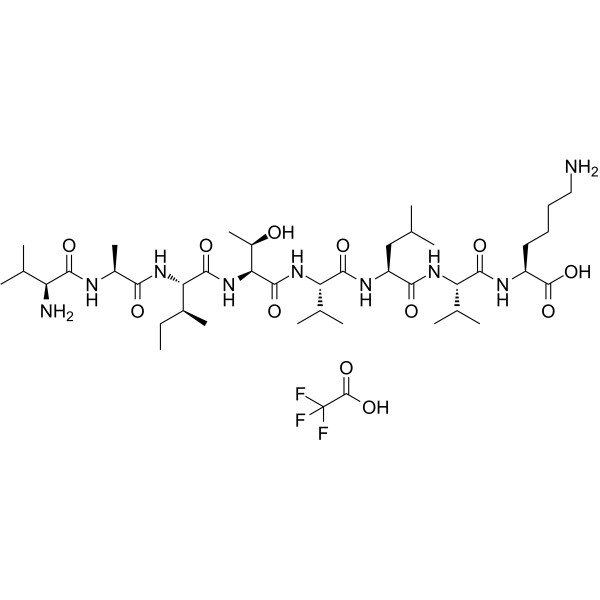
-
- HY-W074890
-
-

-
- HY-P1077
-
|
|
mGluR
Phosphodiesterase (PDE)
Apoptosis
Calmodulin
|
Inflammation/Immunology
|
|
CALP1 is a calmodulin (CaM) agonist (Kd of 88 µM) with binding to the CaM EF-hand/Ca 2+-binding site. CALP1 blocks calcium influx and apoptosis (IC50 of 44.78 µM) through inhibition of calcium channel opening. CALP1 blocks glutamate receptor channels and blocks a store-operated nonselective cation channel. CALP1 activates CaM-dependent phosphodiesterase activity .
|
-
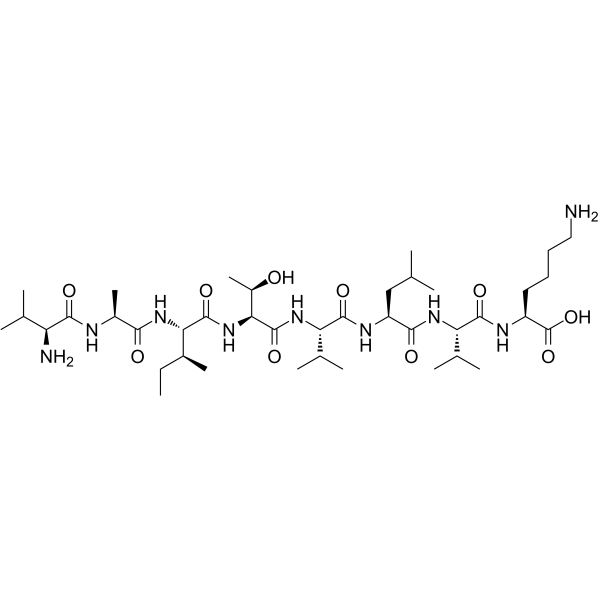
-
- HY-113919
-
|
|
Calcium Channel
|
Inflammation/Immunology
|
|
Nothofagin, a dihydrochalcone, is isolated from rooibos (Aspalathus linearis) . Nothofagin downregulates NF-κB translocation through blocking calcium influx. Nothofagin has antioxidant activity and ameliorates various inflammatory responses such as the septic response and vascular inflammation .
|
-
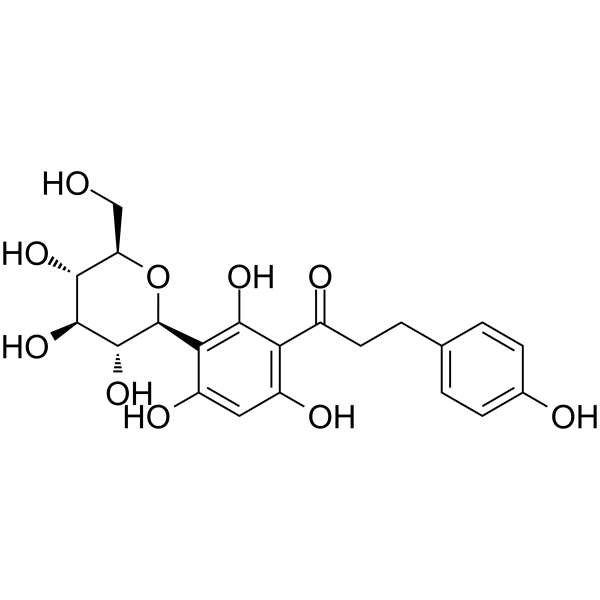
-
- HY-P1287
-
|
|
iGluR
|
Neurological Disease
|
|
Conantokin-T is a γ-carboxyglutamate-containing, N-methyl-D-aspartate (NMDA) antagonist peptidewith an IC50 value of 2 μM. Conantokin-T inhibits NMDA receptor-mediated calcium influx in central nervous system neurons. Conantokin-T can be purified from the venom of the fish-hunting cone snail, Conus tulipa .
|
-

-
- HY-14656
-
-
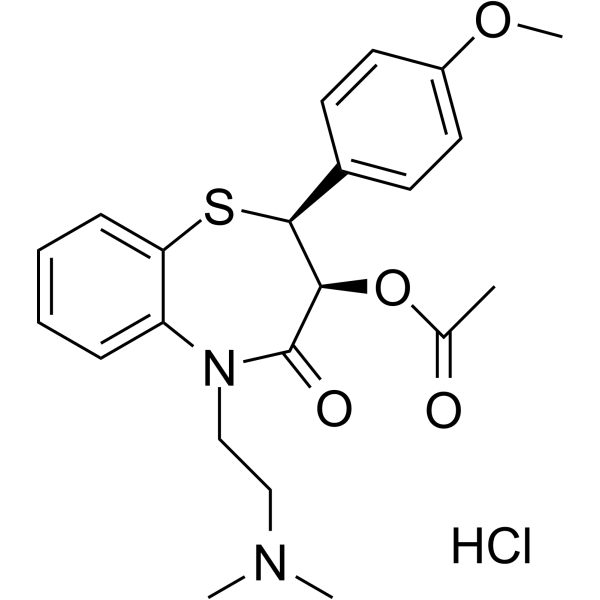
-
- HY-B0317
-
|
|
Calcium Channel
|
Cardiovascular Disease
Cancer
|
|
Amlodipine, an antianginal agent and an orally active dihydropyridine calcium channel blocker, works by blocking the voltage-dependent L-type calcium channels, thereby inhibiting the initial influx of calcium. Amlodipine can be used for the research of high blood pressure and cancer .
|
-
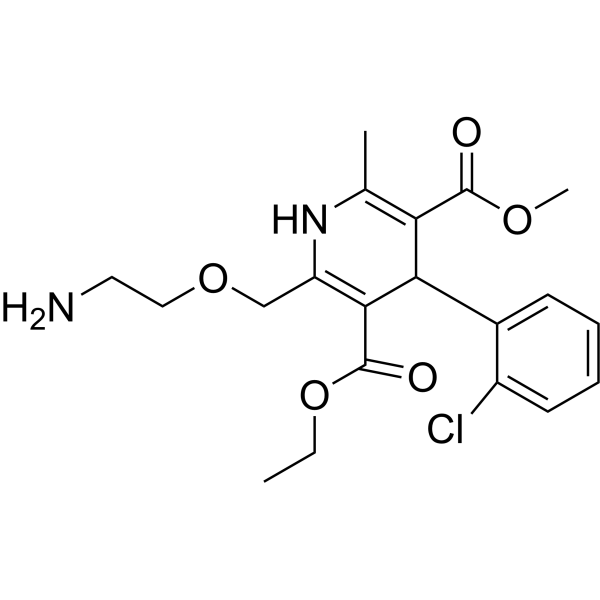
-
- HY-B0317C
-
|
|
|
|
|
Amlodipine mesylate, an antianginal agent and an orally active dihydropyridine calcium channel blocker, works by blocking the voltage-dependent L-type calcium channels, thereby inhibiting the initial influx of calcium. Amlodipine mesylate can be used for the research of high blood pressure and cancer .
|
-
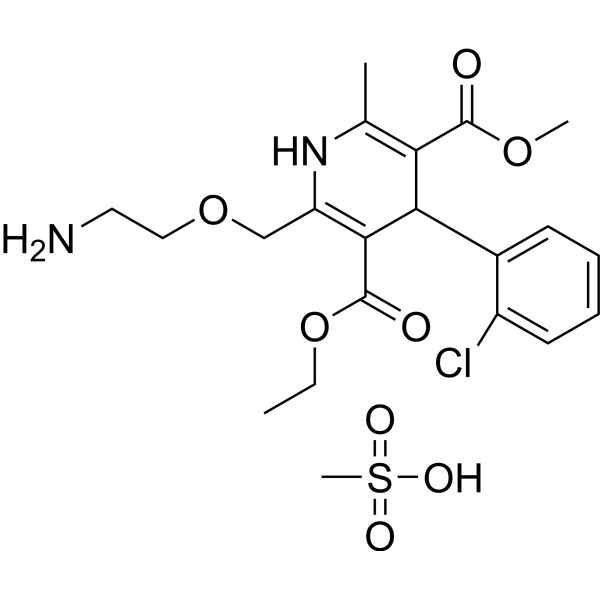
-
- HY-N7875
-
|
|
Others
|
Others
|
|
Celangulin is an insecticidal component isolated from Celastrus angulatus. Celangulin activates the calcium channel on the plasma membrane with increasing the intracellular Ca 2+ after influx from the external. Celangulin activates the calcium channel in the ER .
|
-

-
- HY-B0317A
-
|
|
Calcium Channel
|
Cardiovascular Disease
Cancer
|
|
Amlodipine maleate is a dihydropyridine calcium channel blocker, acts as an orally active antianginal agent. Amlodipine maleate blocks the voltage-dependent L-type calcium channels, thereby inhibiting the initial influx of calcium. Amlodipine maleate can be used for the research of high blood pressure and cancer .
|
-
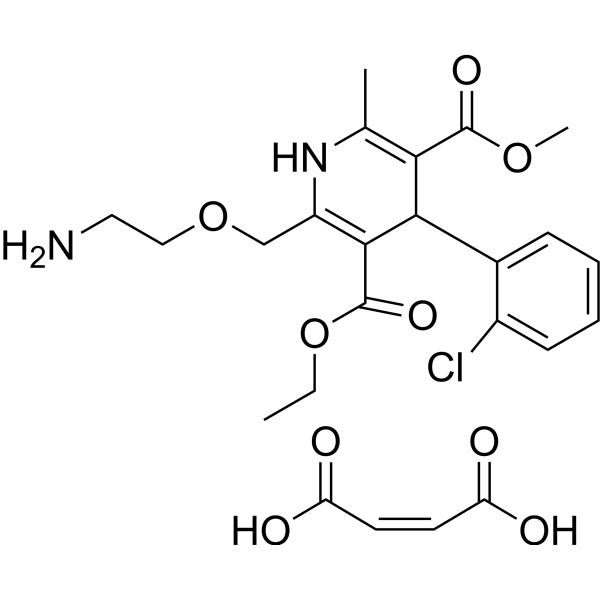
-
- HY-B0317B
-
|
Amlodipine benzenesulfonate
|
Calcium Channel
|
Cardiovascular Disease
Cancer
|
|
Amlodipine besylate (Amlodipine benzenesulfonate), an antianginal agent and an orally active dihydropyridine calcium channel blocker, works by blocking the voltage-dependent L-type calcium channels, thereby inhibiting the initial influx of calcium. Amlodipine besylate can be used for the research of high blood pressure and cancer .
|
-
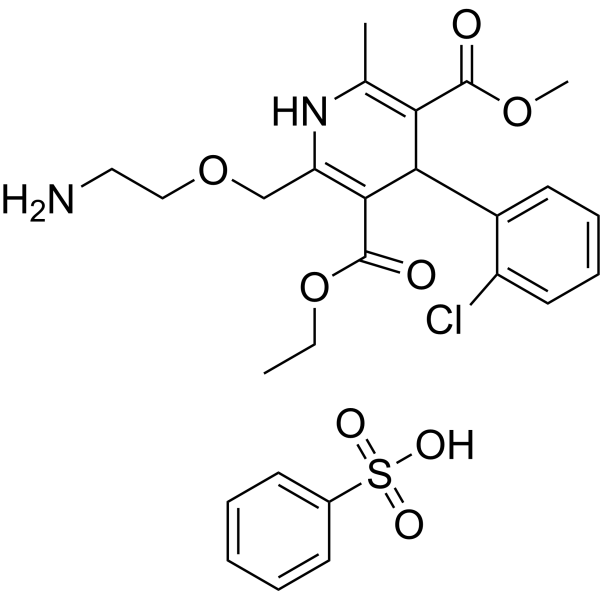
-
- HY-123763
-
|
|
CCR
|
Inflammation/Immunology
|
|
MLN3126 is an orally active and potent CCR9 antagonist. MLN3126 inhibits CCL25-induced calcium mobilization and chemotaxis of mouse primary thymocytes, wiht an IC50 value of 6.3 nM for calcium influx .
|
-
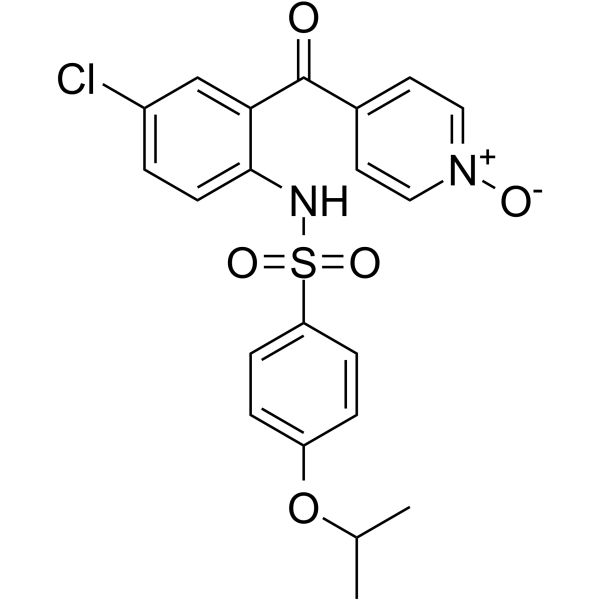
-
- HY-14656S
-
|
|
Calcium Channel
|
Cardiovascular Disease
|
|
Diltiazem-d3 (hydrochloride) is the deuterium labeled Diltiazem hydrochloride. Diltiazem hydrochloride is a Ca2+ influx inhibitor (slow channel blocker or calcium antagonist)[1][2].
|
-
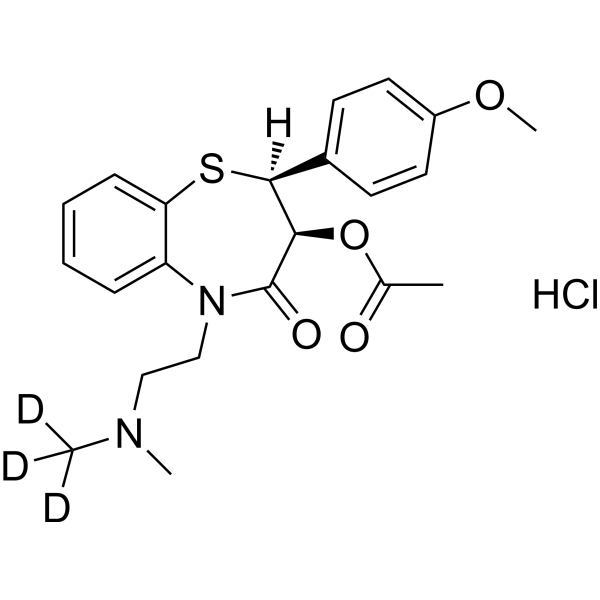
-
- HY-14656R
-
|
CRD-401 (Standard)
|
Calcium Channel
|
Cardiovascular Disease
Cancer
|
|
Diltiazem (hydrochloride) (Standard) is the analytical standard of Diltiazem (hydrochloride). This product is intended for research and analytical applications. Diltiazem hydrochloride is a Ca 2+ influx inhibitor (slow channel blocker or calcium antagonist).
|
-

-
- HY-14656S1
-
-
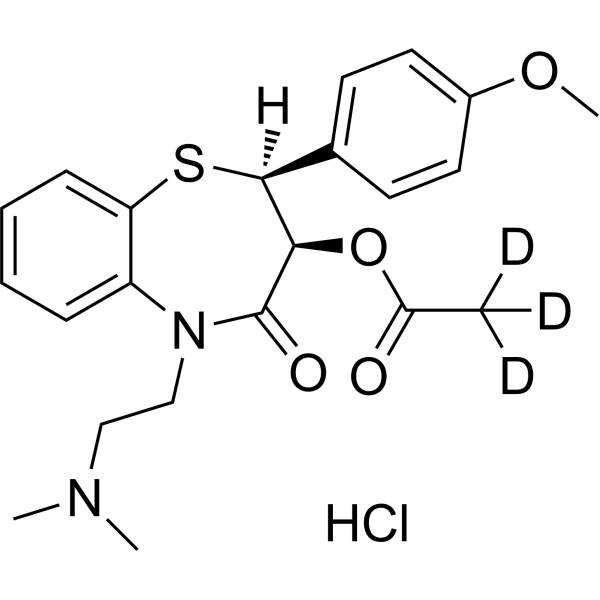
-
- HY-N2060
-
-
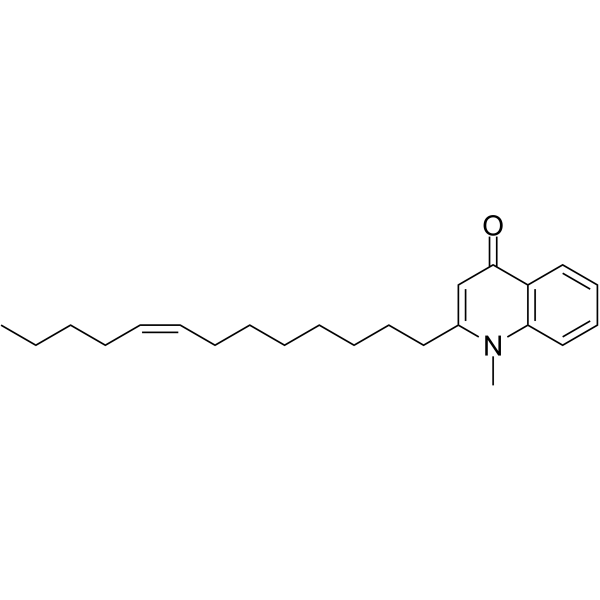
-
- HY-B0317AS
-
|
|
Isotope-Labeled Compounds
Calcium Channel
|
Cardiovascular Disease
Cancer
|
|
Amlodipine-d4 (maleate) is the deuterium labeled Amlodipine maleate. Amlodipine maleate is a dihydropyridine calcium channel blocker, acts as an orally active antianginal agent. Amlodipine maleate blocks the voltage-dependent L-type calcium channels, thereby inhibiting the initial influx of calcium. Amlodipine maleate can be used for the research of high blood pressure and cancer[1][2][3].
|
-

-
- HY-17611
-
|
MSP-2017; (-)-MSP-2017
|
Calcium Channel
|
Cardiovascular Disease
|
|
Etripamil (MSP-2017) is a short-acting L-type calcium-channel antagonist, can be used for the research of Paroxysmal Supraventricular Tachycardia (PSVT). Etripamil (MSP-2017) slows atrioventricular nodal conduction and prolongs atrioventricular nodal refractory periods by inhibiting calcium ion influx through the calcium slow channels in the atrioventricular node cells .
|
-
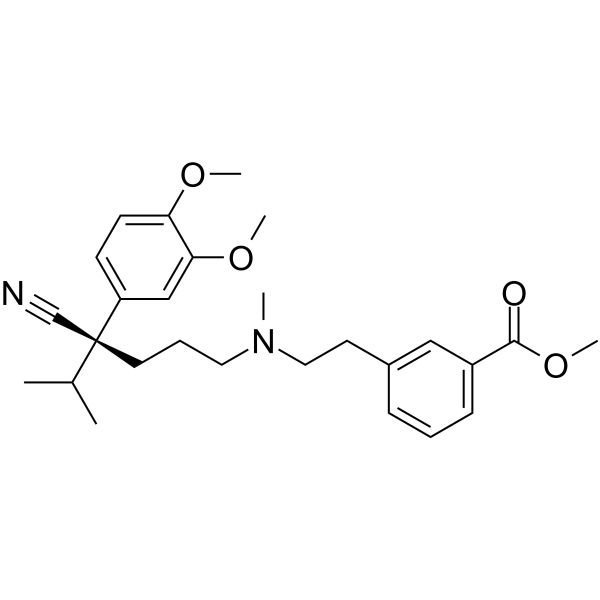
-
- HY-B0317S1
-
|
|
Isotope-Labeled Compounds
|
Cancer
|
|
Amlodipine-d4 is a deuterium labeled Amlodipine (HY-B0317). Amlodipine, an antianginal agent and an orally active dihydropyridine calcium channel blocker, works by blocking the voltage-dependent L-type calcium channels, thereby inhibiting the initial influx of calcium. Amlodipine can be used for the research of high blood pressure and cancer .
|
-
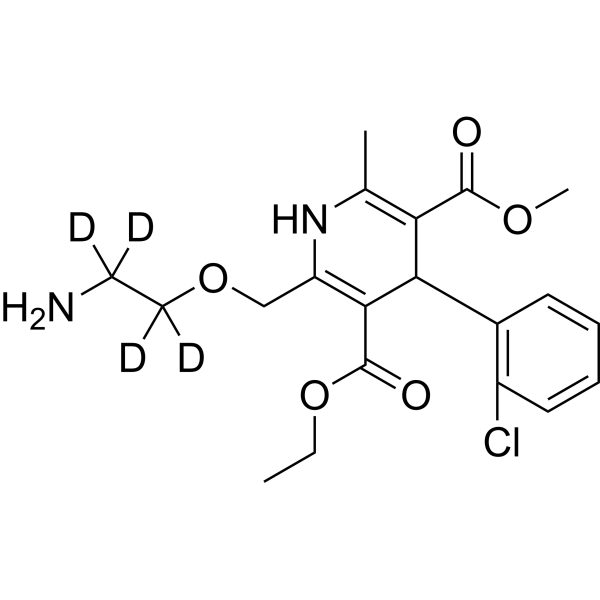
-
- HY-B0317S
-
|
|
|
|
|
Amlodipine-1,1,2,2-d4 (maleate) is the deuterium labeled Amlodipine. Amlodipine, an antianginal agent and an orally active dihydropyridine calcium channel blocker, works by blocking the voltage-dependent L-type calcium channels, thereby inhibiting the initial influx of calcium. Amlodipine can be used for the research of high blood pressure and cancer[1][2][3].
|
-

-
- HY-B0317BS
-
|
Amlodipine benzenesulfonate-d4 besylate
|
Isotope-Labeled Compounds
Calcium Channel
|
Cardiovascular Disease
Cancer
|
|
Amlodipine-d4 (besylate) is the deuterium labeled Amlodipine besylate. Amlodipine besylate (Amlodipine benzenesulfonate), an antianginal agent and an orally active dihydropyridine calcium channel blocker, works by blocking the voltage-dependent L-type calcium channels, thereby inhibiting the initial influx of calcium. Amlodipine besylate can be used for the research of high blood pressure and cancer[1][2][3].
|
-

-
- HY-100168
-
|
|
Phospholipase
|
Others
|
|
BAPTA is a selective chelator for calcium. BAPTA, as calcium indicator, has high selectivity against magnesium and calcium. BAPTA is widely used as an intracellular buffer for investigating the effects of Ca 2+ release from intracellular stores or influx via Ca 2+-permeable channels in the plasma membrane. BAPTA can also inhibit phospholipase C activity independently of their role as Ca 2+ chelators .
|
-

-
- HY-B0317BR
-
|
Amlodipine benzenesulfonate (Standard)
|
Calcium Channel
|
Cardiovascular Disease
Cancer
|
|
Amlodipine (besylate) (Standard) is the analytical standard of Amlodipine (besylate). This product is intended for research and analytical applications. Amlodipine besylate (Amlodipine benzenesulfonate), an antianginal agent and an orally active dihydropyridine calcium channel blocker, works by blocking the voltage-dependent L-type calcium channels, thereby inhibiting the initial influx of calcium. Amlodipine besylate can be used for the research of high blood pressure and cancer .
|
-
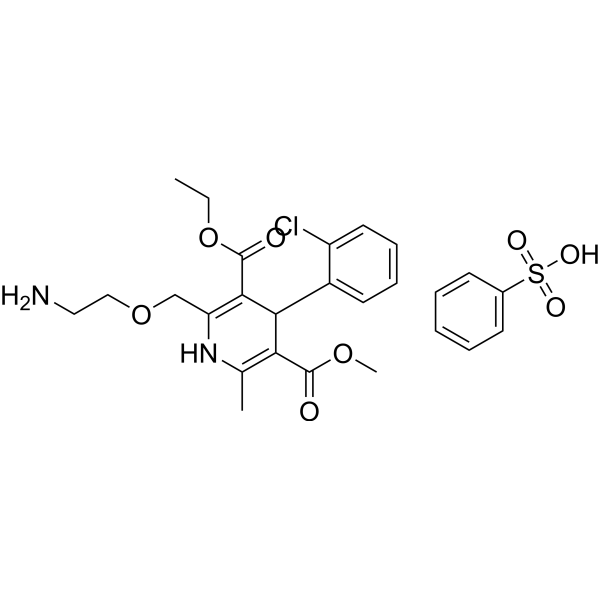
-
- HY-N7395
-
-
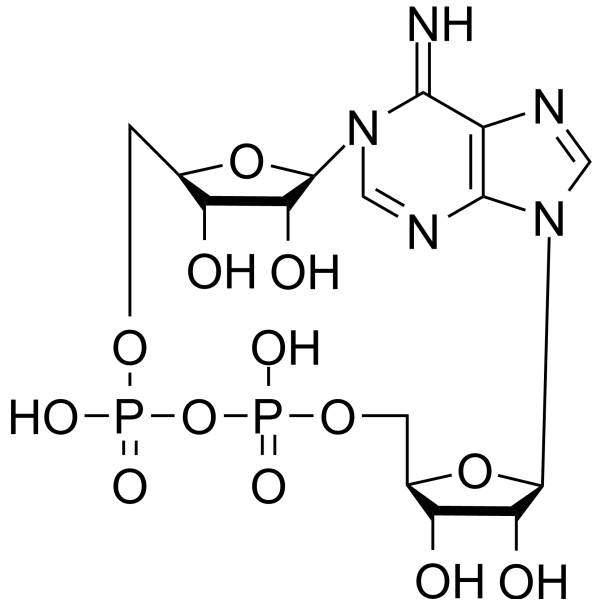
-
- HY-15064
-
|
|
TRP Channel
|
Neurological Disease
|
|
HC-030031 is a potent and selective TRPA1 inhibitor, which antagonizes AITC- and formalin-evoked calcium influx with IC50s of 6.2±0.2 and 5.3±0.2 μM, respectively.
|
-

-
- HY-N7395A
-
-
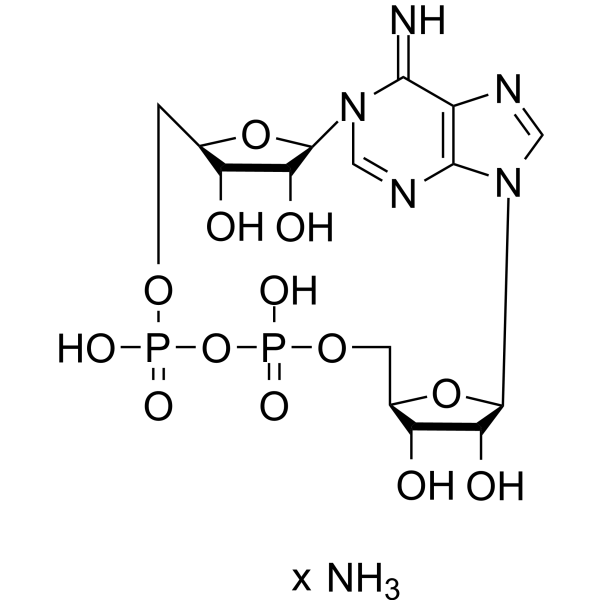
-
- HY-100168B
-
|
|
Phospholipase
|
Others
|
|
BAPTA tetrapotassium is a selective chelator for calcium. BAPTA, as calcium indicator, has high selectivity against magnesium and calcium. BAPTA tetrapotassium is widely used as an intracellular buffer for investigating the effects of Ca 2+ release from intracellular stores or influx via Ca 2+-permeable channels in the plasma membrane. BAPTA tetrapotassium can also inhibit phospholipase C activity independently of their role as Ca 2+ chelators .
|
-
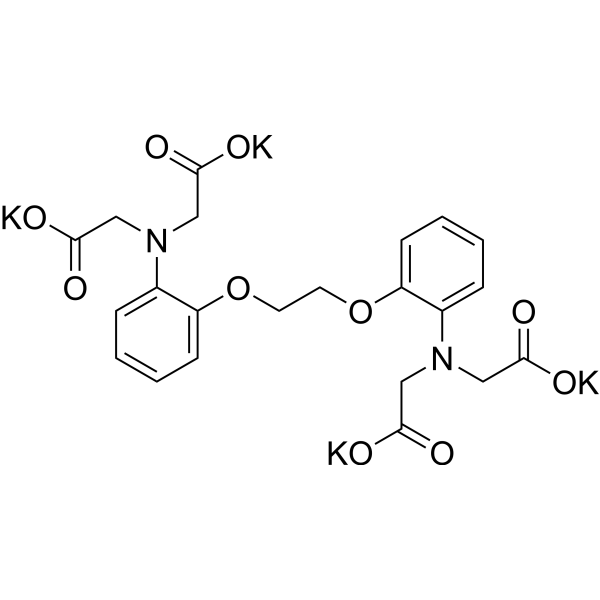
-
- HY-100168A
-
|
|
Phospholipase
|
Others
|
|
BAPTA tetrasodium is a selective chelator for calcium. BAPTA tetrasodium, as calcium indicator, has high selectivity against magnesium and calcium. BAPTA tetrasodium is widely used as an intracellular buffer for investigating the effects of Ca 2+ release from intracellular stores or influx via Ca 2+-permeable channels in the plasma membrane. BAPTA tetrasodium can also inhibit phospholipase C activity independently of their role as Ca 2+ chelators .
|
-

-
- HY-B1174
-
|
Kanamycin B
|
Antibiotic
Bacterial
|
Infection
|
|
Bekanamycin (Kanamycin B) is an aminoglycoside antibiotic produced by Streptomyces kanamyceticus, against an array of Gram-positive and Gram-negative bacterial strain .
|
-

-
- HY-116408
-
|
|
mAChR
|
Neurological Disease
|
|
Propiverine is a potent antimuscarinic agent. Propiverine inhibits cellular calcium influx, thereby diminishing muscle spasm. Propiverine has neurotropic and musculotropic effects on the urinary bladder smooth muscle. Propiverine can used for overactive bladder (OAB) research .
|
-
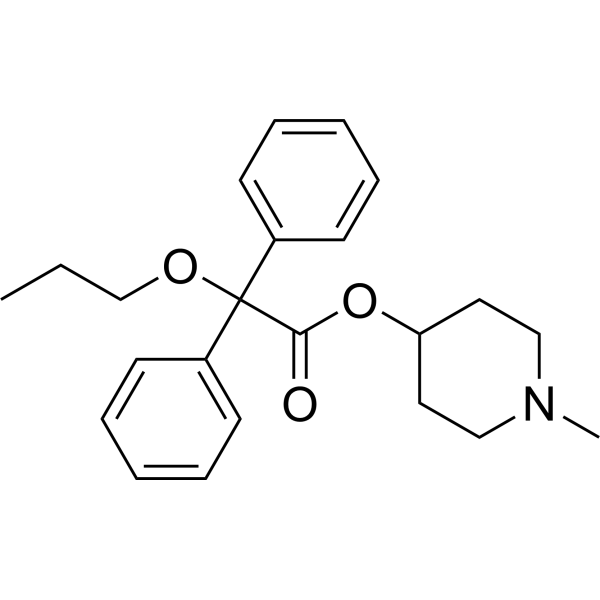
-
- HY-107411
-
|
(6E)-Bromoenol lactone
|
Phospholipase
|
Inflammation/Immunology
|
|
Bromoenol lactone ((6E)-Bromoenol lactone) is a suicide-based irreversible, selective, potent inhibitor of calcium-independent phospholipase A2 (iPLA2β) with an IC50 value of approximately 7 μM, which inhibits antigen-stimulated mast cell exocytosis without blocking Ca 2+ influx .
|
-
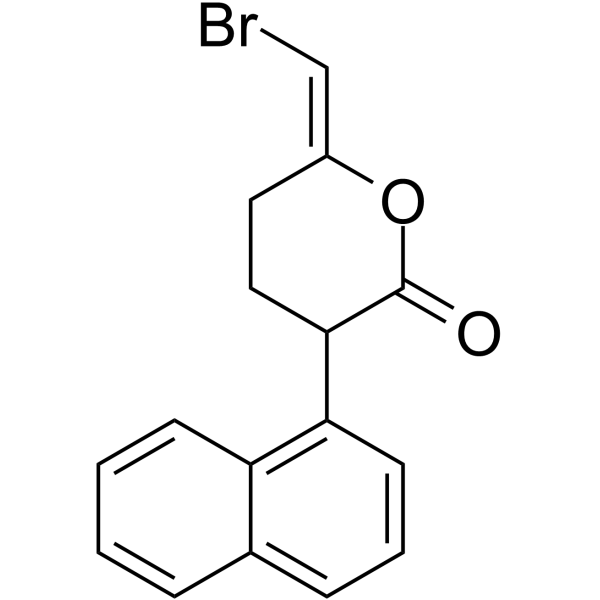
-
- HY-18723
-
Yoda 1
Maximum Cited Publications
25 Publications Verification
|
Piezo Channel
Akt
ERK
Potassium Channel
|
Cardiovascular Disease
|
|
Yoda 1 is a potent and selective Piezo1 agonist. Yoda 1 activates purified Piezo1 channels. Yoda 1 potently inhibits macropinocytosis induced by epidermal growth factor (EGF). Yoda 1 enhances Ca 2+ influx followed by activation of the calcium-activated potassium channel KCa3.1 and inhibition of Rac1 activation .
|
-
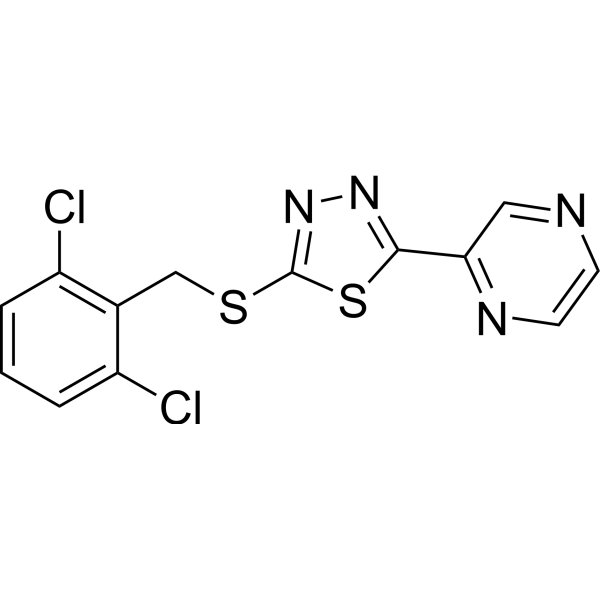
-
- HY-P1080
-
|
|
Calcium Channel
|
Neurological Disease
|
|
ω-Agatoxin IVA is a potent, selective P/Q type Ca 2+ (Cav2.1) channel blocker with IC50s of 2 nM and 90 nM for P-type and Q-type Ca 2+ channels, respectively. ω-Agatoxin IVA (IC50, 30-225 nM) inhibits glutamate exocytosis and calcium influx elicited by high potassium. ω-Agatoxin IVA also blocks the high potassium-induced release of serotonin and norepinephrine. ω-Agatoxin IVA has no effect on L-type or N-type calcium channels .
|
-

-
- HY-115767
-
|
1,2-Dioleoyl-rac-glycerol
|
PKC
|
Others
|
|
(±)-1,2-Diolein (1,2-Dioleoyl-rac-glycerol) is a PKC activator. (±)-1,2-Diolein increases myotubes Ca 2+ influx .
|
-
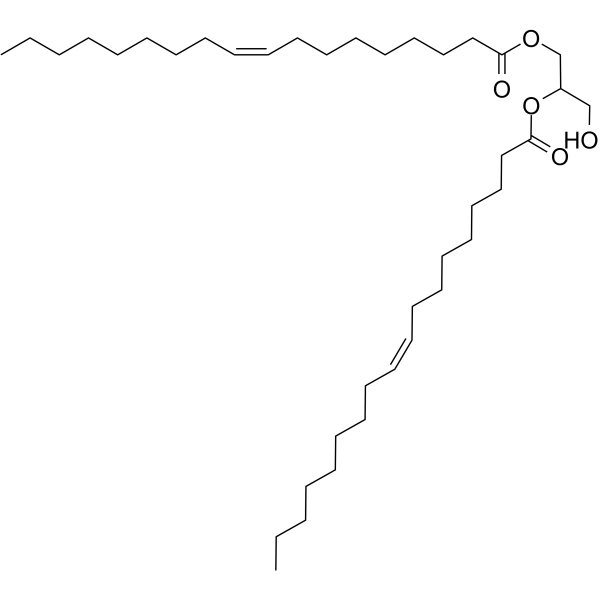
-
- HY-13954
-
|
|
P2X Receptor
|
Neurological Disease
Inflammation/Immunology
|
|
A 839977 is a P2X7 selective antagonist; it blocks BzATP-evoked calcium influx at recombinant human, rat and mouse P2X7 receptors (IC50 values are 20 nM, 42 nM and 150 nM respectively) and reduces inflammatory and neuropathic pain in animal models; the antihyperalgesic effects of P2X7 receptor blockade are mediated by blocking the release of IL-1beta .
|
-

-
- HY-P1080A
-
|
|
Calcium Channel
|
Neurological Disease
|
|
ω-Agatoxin IVA TFA is a potent, selective P/Q type Ca 2+ (Cav2.1) channel blocker with IC50s of 2 nM and 90 nM for P-type and Q-type Ca 2+ channels, respectively. ω-Agatoxin IVA TFA (IC50, 30-225 nM) inhibits glutamate exocytosis and calcium influx elicited by high potassium. ω-Agatoxin IVA TFA also blocks the high potassium-induced release of serotonin and norepinephrine. ω-Agatoxin IVA TFA has no effect on L-type or N-type calcium channels .
|
-
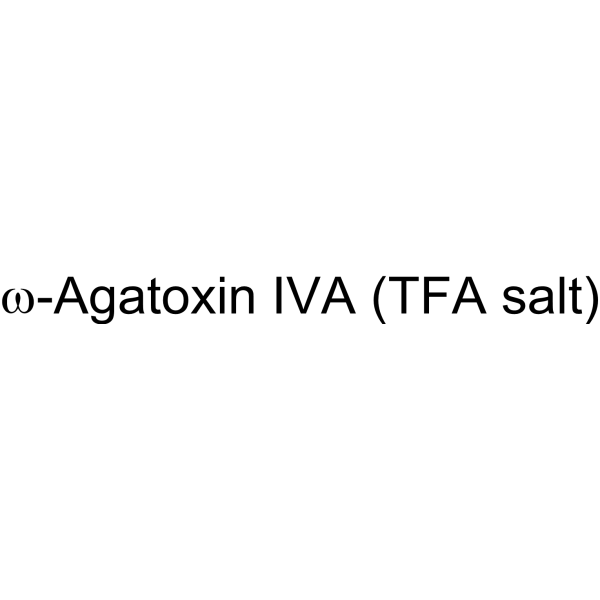
| Cat. No. |
Product Name |
Type |
-
- HY-100168
-
|
|
Biochemical Assay Reagents
|
|
BAPTA is a selective chelator for calcium. BAPTA, as calcium indicator, has high selectivity against magnesium and calcium. BAPTA is widely used as an intracellular buffer for investigating the effects of Ca 2+ release from intracellular stores or influx via Ca 2+-permeable channels in the plasma membrane. BAPTA can also inhibit phospholipase C activity independently of their role as Ca 2+ chelators .
|
-
- HY-100168B
-
|
|
Biochemical Assay Reagents
|
|
BAPTA tetrapotassium is a selective chelator for calcium. BAPTA, as calcium indicator, has high selectivity against magnesium and calcium. BAPTA tetrapotassium is widely used as an intracellular buffer for investigating the effects of Ca 2+ release from intracellular stores or influx via Ca 2+-permeable channels in the plasma membrane. BAPTA tetrapotassium can also inhibit phospholipase C activity independently of their role as Ca 2+ chelators .
|
| Cat. No. |
Product Name |
Target |
Research Area |
-
- HY-P1077A
-
|
|
mGluR
Phosphodiesterase (PDE)
Apoptosis
Calmodulin
|
Inflammation/Immunology
|
|
CALP1 TFA is a calmodulin (CaM) agonist (Kd of 88 µM) with binding to the CaM EF-hand/Ca 2+-binding site. CALP1 TFA blocks calcium influx and apoptosis (IC50 of 44.78 µM) through inhibition of calcium channel opening. CALP1 TFA blocks glutamate receptor channels and blocks a store-operated nonselective cation channel. CALP1 TFA activates CaM-dependent phosphodiesterase activity .
|
-
- HY-P1080A
-
|
|
Calcium Channel
|
Neurological Disease
|
|
ω-Agatoxin IVA TFA is a potent, selective P/Q type Ca 2+ (Cav2.1) channel blocker with IC50s of 2 nM and 90 nM for P-type and Q-type Ca 2+ channels, respectively. ω-Agatoxin IVA TFA (IC50, 30-225 nM) inhibits glutamate exocytosis and calcium influx elicited by high potassium. ω-Agatoxin IVA TFA also blocks the high potassium-induced release of serotonin and norepinephrine. ω-Agatoxin IVA TFA has no effect on L-type or N-type calcium channels .
|
-
- HY-P1077
-
|
|
mGluR
Phosphodiesterase (PDE)
Apoptosis
Calmodulin
|
Inflammation/Immunology
|
|
CALP1 is a calmodulin (CaM) agonist (Kd of 88 µM) with binding to the CaM EF-hand/Ca 2+-binding site. CALP1 blocks calcium influx and apoptosis (IC50 of 44.78 µM) through inhibition of calcium channel opening. CALP1 blocks glutamate receptor channels and blocks a store-operated nonselective cation channel. CALP1 activates CaM-dependent phosphodiesterase activity .
|
-
- HY-P1287
-
|
|
iGluR
|
Neurological Disease
|
|
Conantokin-T is a γ-carboxyglutamate-containing, N-methyl-D-aspartate (NMDA) antagonist peptidewith an IC50 value of 2 μM. Conantokin-T inhibits NMDA receptor-mediated calcium influx in central nervous system neurons. Conantokin-T can be purified from the venom of the fish-hunting cone snail, Conus tulipa .
|
-
- HY-P1080
-
|
|
Calcium Channel
|
Neurological Disease
|
|
ω-Agatoxin IVA is a potent, selective P/Q type Ca 2+ (Cav2.1) channel blocker with IC50s of 2 nM and 90 nM for P-type and Q-type Ca 2+ channels, respectively. ω-Agatoxin IVA (IC50, 30-225 nM) inhibits glutamate exocytosis and calcium influx elicited by high potassium. ω-Agatoxin IVA also blocks the high potassium-induced release of serotonin and norepinephrine. ω-Agatoxin IVA has no effect on L-type or N-type calcium channels .
|
| Cat. No. |
Product Name |
Category |
Target |
Chemical Structure |
| Cat. No. |
Compare |
Product Name |
Species |
Source |
Compare Products
|
| Products |
|
| Cat. No. |
|
| Species |
|
| Source |
|
| Tag |
|
| Accession |
|
| Gene ID |
|
| Molecular Weight |
|
| Purity |
|
| Endotoxin Level |
|
| Biological Activity |
|
| Appearance |
|
| Formulation |
|
| Storage & Stability |
|
| Shipping |
|
| Free Sample |
Yes
No
|
| Size |
* This product has been "discontinued".
Optimized version of product available:
|
| Cat. No. |
Product Name |
Chemical Structure |
-
- HY-14656S
-
|
|
|
Diltiazem-d3 (hydrochloride) is the deuterium labeled Diltiazem hydrochloride. Diltiazem hydrochloride is a Ca2+ influx inhibitor (slow channel blocker or calcium antagonist)[1][2].
|
-

-
- HY-B0317AS
-
|
|
|
Amlodipine-d4 (maleate) is the deuterium labeled Amlodipine maleate. Amlodipine maleate is a dihydropyridine calcium channel blocker, acts as an orally active antianginal agent. Amlodipine maleate blocks the voltage-dependent L-type calcium channels, thereby inhibiting the initial influx of calcium. Amlodipine maleate can be used for the research of high blood pressure and cancer[1][2][3].
|
-

-
- HY-B0317S1
-
|
|
|
Amlodipine-d4 is a deuterium labeled Amlodipine (HY-B0317). Amlodipine, an antianginal agent and an orally active dihydropyridine calcium channel blocker, works by blocking the voltage-dependent L-type calcium channels, thereby inhibiting the initial influx of calcium. Amlodipine can be used for the research of high blood pressure and cancer .
|
-

-
- HY-14656S1
-
|
|
|
Diltiazem-(acetoxy-d3) (hydrochloride) is the deuterium labeled Diltiazem hydrochloride. Diltiazem hydrochloride is a Ca2+ influx inhibitor (slow channel blocker or calcium antagonist)[1][2].
|
-

-
- HY-B0317BS
-
|
|
|
Amlodipine-d4 (besylate) is the deuterium labeled Amlodipine besylate. Amlodipine besylate (Amlodipine benzenesulfonate), an antianginal agent and an orally active dihydropyridine calcium channel blocker, works by blocking the voltage-dependent L-type calcium channels, thereby inhibiting the initial influx of calcium. Amlodipine besylate can be used for the research of high blood pressure and cancer[1][2][3].
|
-

Your information is safe with us. * Required Fields.
Inquiry Information
- Product Name:
- Cat. No.:
- Quantity:
- MCE Japan Authorized Agent:












































